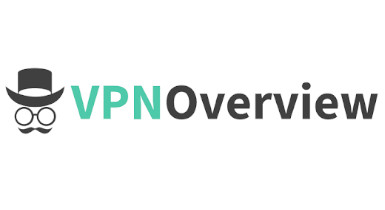The recommendations will help SMEs maintain a strong cybersecurity posture amidst the rapid changes taking place.
Nijmegen, The Netherlands | February 8, 2021 –(Press Release Wire)– Modern businesses are adjusting to the rise and advancement of the digital era (and all that comes with it) more and more. In many ways, ensuring the ongoing longevity and success of a business in this modern era is very much intrinsically linked to being willing and able to adapt and realign with the way that the modern world is moving.
Like never before, we have seen a tremendous amount of attention to detail and overall emphasis that is specifically geared towards allowing businesses to enhance and improve from the ground up.
Modern workforce trends are also becoming more enhanced and improved all the time. In fact, the enhancement and improvement of modern businesses is intrinsically linked to the willingness and capability for modern businesses to adapt and overcome challenges, improving significantly in the process.
For many businesses, this is a learning curve that they are still navigating. For small businesses specifically, there is quite a lot to be said about how small businesses can adjust to this new norm and the workforce trends that are coming along with it.

Shifting or expanding online
Some small businesses, believe it or not, still operate largely (if not entirely) on a traditional foundation.
While this is not necessarily a bad thing, we are definitively evolving into the digital era with exceedingly rapid pace. So, adapting to the new norm is crucial. And one of the best ways that small businesses especially can achieve this is to shift or expand their business online.
With more focus on modernisation in the professional landscape, the heightened focus on the online platform is driving businesses to new heights. And small businesses can always utilise that to their advantage.
Prioritising cybersecurity measures
Of course, one of the biggest and most important ways that small businesses can adapt to the new norm and take advantage of workforce trends is to prioritise cybersecurity measures.
Whether it is the full scale use of consumer-focused VPN services or the incorporation of a business-created cybersecurity framework that entirely encapsulates a business’ approach to privacy and security in the digital era and beyond, prioritising cybersecurity measures makes a world of difference in all the right ways.
The more that small businesses focus their energy, money, efforts, and time online, the more important cybersecurity is going to come.
Investing in convenience and efficiency
The digital era has created an inevitable amount of investment and active prioritisation surrounding convenience and efficiency. For small businesses today and in the future and beyond, one of the best ways that they can adapt and thrive in the new norm and prioritise workforce trends now and into the future is to invest in convenience and efficiency.
These are the cornerstones to longevity and success for any business in the digital era and they are even more instrumental for small businesses of all natures, origins, shapes and scales. In many ways, this is expected to be just the tip of the iceberg with the best still yet to come.
Continual and Continuous Monitoring
Cybersecurity is never a one-off affair. It is important to maintain visibility over network endpoints, including employee devices and activities, while respecting their privacy. Apparently, most attacks begin on endpoints used by people—not the firewall or your servers. With the remote work trend, businesses have more endpoints to manage because opportunities for attacks are multiplied.
Endpoint monitoring should be continual (major assessments at regular intervals) and continuous (on-going process). The aim of monitoring details of activities taking place on your network, especially the movement of files is to ensure greater visibility and eliminate blind spots.
Risk Assessment
While transitioning a workspace in line with modern trends, it is crucial to identify the changing nature of risks as well as new loopholes that may have opened up due to such a transition. Therefore, the risk assessment required in this situation would be geared towards analyzing the extent to which business operations rely on certain security functions, as well as the manner in which such functions have become affected due to the transition.
That is basically about answering the questions: what risks were the business exposed to before? And what risks are the business exposed to now? Changes are being effected so rapidly now but security-blind transitions only lead to latter regrets.
Conclusion
No one knows precisely how long the COVID-19 scourge will last. But we know that it has altered the nature of work significantly for years to come. The recommendations above will help SMEs maintain a strong cybersecurity posture amidst the rapid changes taking place.
A summarized checklist for effecting transitions is the following:
● Incorporate privacy and security considerations
● Ensure continuous efficiency (business as usual, or the nearest to it)
● Monitor network activities always
● Evaluate risks and security gaps
Press & Media Contact:
David Janssen
VPNoverview.com
Groesbeekseweg 246A, 6523PJ,
Nijmegen, The Netherlands
+2348180575277
https://vpnoverview.com

